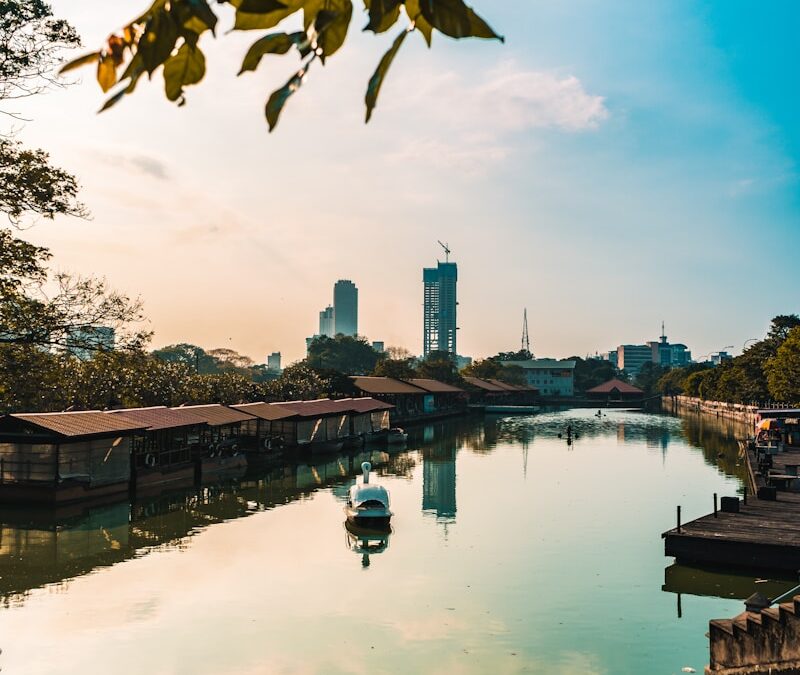Foundational Structural Engineering Principles for Floating Platforms
Designing for Buoyancy and Stability
The integration of structural engineering of floating multi-story structures involves a deep understanding of buoyancy and stability principles to ensure safe and reliable construction. As cities like Riyadh and Dubai explore innovative solutions to expand urban areas onto water bodies, the demand for robust engineering practices grows. Floating platforms must be designed to support the weight of multi-story buildings while maintaining stability in dynamic water conditions.
Buoyancy is the cornerstone of floating structure design. Engineers calculate the buoyant force by assessing the volume of water displaced by the platform. This force must be sufficient to counterbalance the weight of the entire structure, including live loads (people, furniture) and dead loads (the building itself). Materials chosen for the platform, such as lightweight yet durable composites, play a crucial role in achieving the necessary buoyancy.
Stability, another critical aspect, is maintained by ensuring the center of gravity remains low and well-distributed. Engineers achieve this by placing heavier components at lower levels and using ballast systems to counteract any tilting forces. In regions like Saudi Arabia and the UAE, where floating structures are gaining traction, adhering to these principles ensures that multi-story buildings remain stable even in adverse weather conditions.
Innovative Construction Materials and Techniques
The choice of construction materials significantly impacts the durability and performance of floating multi-story structures. Engineers favor materials that offer high strength-to-weight ratios, such as advanced composites, reinforced concrete, and corrosion-resistant metals. These materials not only provide the necessary structural integrity but also withstand the harsh marine environment.
Modular construction techniques are increasingly used to enhance the efficiency and flexibility of building floating structures. Prefabricated modules can be constructed offsite and then assembled on the floating platform. This approach reduces construction time and minimizes the environmental impact. For example, in Dubai, the Floating Seahorse villas exemplify the successful application of modular construction, combining luxury with sustainability.
Additionally, engineers employ advanced anchoring and mooring systems to secure floating structures. These systems must be robust enough to withstand forces from waves, tides, and winds. Dynamic positioning systems, which use real-time data to adjust the structure’s position, further enhance stability. In Riyadh, the Red Sea Project incorporates these advanced technologies, ensuring the safety and longevity of its floating structures.
Addressing Environmental and Safety Concerns
Environmental sustainability and safety are paramount in the design of floating multi-story structures. Engineers must consider the impact on marine ecosystems and implement measures to minimize disruption. This involves selecting environmentally friendly materials and construction practices that protect aquatic life and water quality.
Safety considerations include designing for extreme weather conditions, such as storms and rising sea levels. Floating structures must be equipped with systems to manage water ingress and structural stress. Emergency evacuation procedures and fire safety measures are integral to the design, ensuring the well-being of occupants. In the UAE, stringent building codes and regulations ensure that floating structures meet high safety standards.
Moreover, continuous monitoring and maintenance are crucial for the long-term performance of floating structures. Sensors and automated systems can detect structural anomalies and environmental changes, allowing for proactive maintenance. This ensures that floating buildings remain safe and functional over time, adapting to evolving conditions.
Architectural and Engineering Innovations for Floating Structures
Innovative Architectural Designs
Architectural innovation is vital in creating functional and aesthetically pleasing floating multi-story structures. Architects must balance form and function, ensuring that buildings are not only structurally sound but also enhance the urban landscape. This involves integrating features that promote sustainability and resilience.
One approach is to design with aerodynamic shapes that minimize wind resistance and improve stability. Additionally, incorporating green technologies, such as solar panels and rainwater harvesting systems, enhances the sustainability of floating structures. In Dubai, the Floating Venice project showcases these principles, combining luxury with environmental stewardship.
Flexible foundations are another architectural innovation that enhances the durability of floating structures. These foundations can absorb and dissipate the energy from waves and currents, reducing stress on the building. This adaptability ensures that structures can withstand changing water conditions without compromising integrity. The Floating City in Saudi Arabia exemplifies this approach, with designs that prioritize both resilience and comfort.
Case Studies: Successful Floating Multi-Story Structures
Several case studies highlight the successful implementation of structural and architectural principles in floating multi-story structures. In the UAE, the Water Discus Hotel represents a groundbreaking approach to underwater and floating architecture. This project combines advanced engineering techniques with innovative design to create a unique and resilient structure. The hotel’s floating discs are anchored securely and designed to withstand harsh marine conditions, offering a safe and stable environment for guests.
In Saudi Arabia, the Red Sea Project includes floating luxury resorts that showcase the potential of sustainable floating developments. These structures use advanced materials and construction techniques to ensure stability and durability. The integration of renewable energy systems and sustainable practices aligns with Saudi Arabia’s Vision 2030 goals of promoting environmental sustainability.
These examples demonstrate how collaboration between engineers, architects, and environmental experts can create successful floating urban developments. By leveraging cutting-edge technologies and sustainable practices, these projects set a benchmark for future developments in coastal cities worldwide.
Conclusion
In conclusion, the structural engineering of floating multi-story structures involves a comprehensive understanding of buoyancy, stability, and innovative construction techniques. Cities like Riyadh and Dubai are at the forefront of integrating these principles to create resilient and sustainable urban environments. By addressing environmental and safety concerns, and incorporating architectural innovations, floating structures offer a viable solution to urban expansion challenges. As the demand for sustainable and adaptable urban spaces grows, the principles and practices outlined in this article will be essential for the successful implementation of floating multi-story buildings.
—
#StructuralEngineering #FloatingPlatforms #MultiStoryBuildings #SustainableArchitecture #UAEInnovation #SaudiArabiaUrbanProjects #LeadershipInUrbanDevelopment

